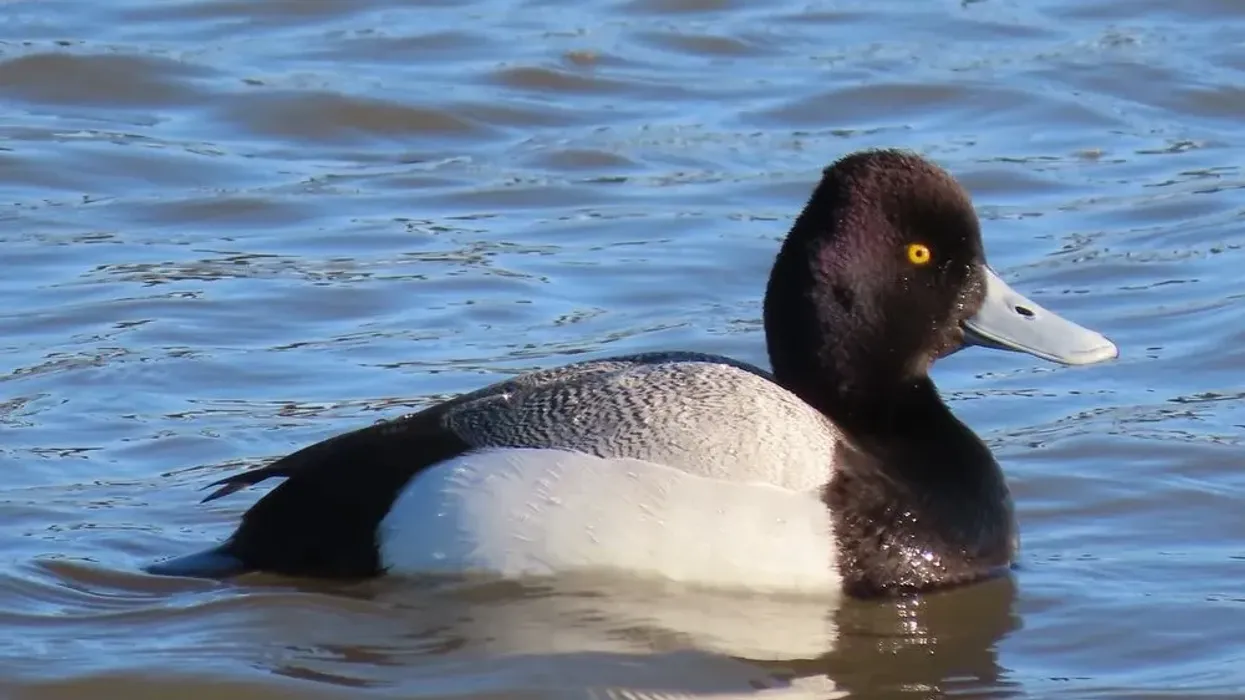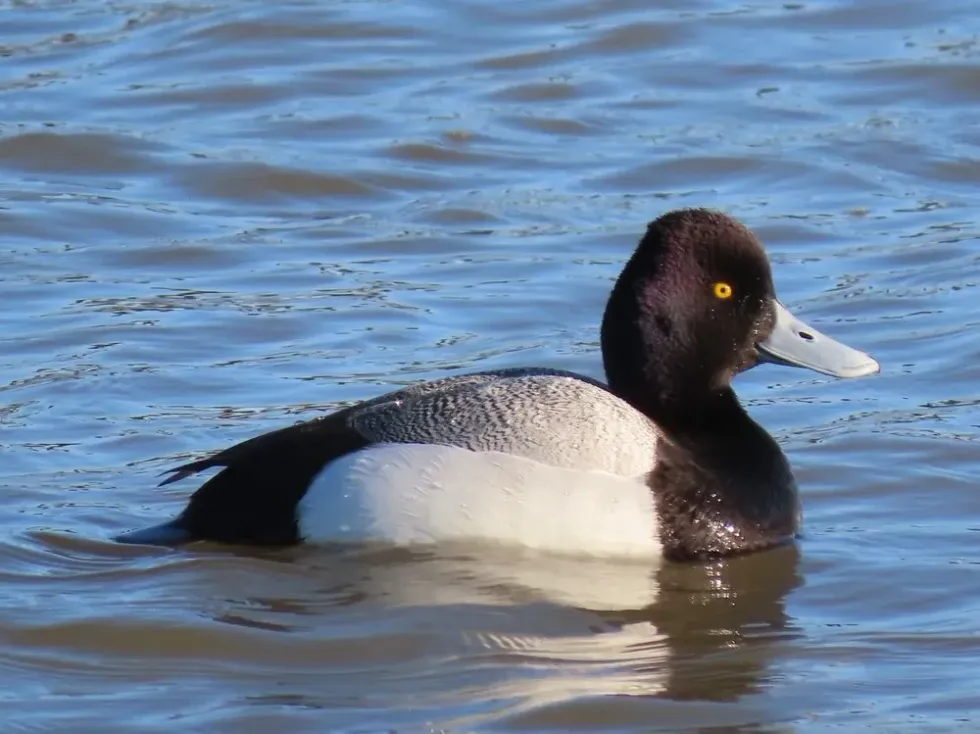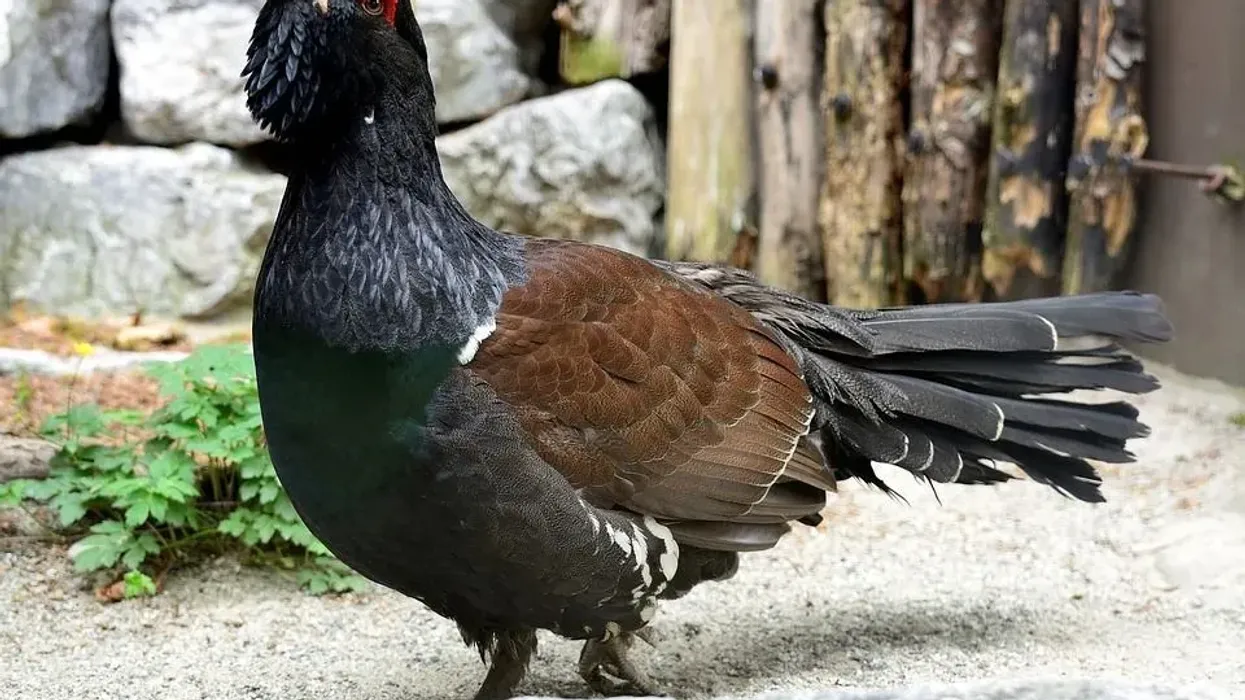Lesser scaup (Aythya affinis), of order Anseriformes, family Anatidae, are found in lakes during the non-breeding season and usually live in estuaries and wetland habitats. There are two similar species of scaups, the greater scaups, and the lesser scaups, located in great lakes.
The lesser scaups are non-diving ducks who have an overall dark brown to mottled brown plumage. They have a distinctive blue bill and are also named bluebills or broadbills. They are usually shy and migrate from North America to Central America during the winter season.
The lesser scaup is an omnivore that feeds on plant and animal matter. After reading about these North American birds, you may also check out the northern shoveler and the ring-necked duck.
Lesser Scaup Interesting Facts
What type of animal is a Lesser Scaup?
The lesser scaup (Aythya affinis) breed is a North American non-diving duck. It has a sibling, the greater scaup, which has a higher body weight. Though their population is adequate, an evident decrease in their population has been recorded.
What class of animal does a Lesser Scaup belong to?
The lesser scaup (Aythya affinis) is a non-diving duck belonging to the class of Aves, order Anseriformes, family Anatidae. The population of these species of ducks is decreasing due to pollution of water bodies, degradation of habitat, and health conditions. This bird is omnivorous.
How many Lesser Scaups are there in the world?
The lesser scaup species cannot be classified as Near Threatened or Endangered, but their population is decreasing. Currently, the conservation status of lesser scaup is listed as of Least Concern, with several scaups located in the southern United States.
Where does a Lesser Scaup live?
The lesser scaup lives in brackish or muddy wetlands water. This bird species is not found in the oceans, unlike the greater scaup. Lesser scaup mostly resides in North America but migrates to South America in winter. During the winter season, this bird is mostly seen on coastal bays and estuaries.
What is a Lesser Scaup's habitat?
Flocks of lesser scaup females can be seen on large lakes, estuaries, and reservoirs during the winter season or while this bird is migrating. For breeding, females can be spotted in the nest of boreal forests of Canada and North America as well as in the tundra zone.
Who do Lesser Scaups live with?
Lesser scaups live in tight-knit flocks of a maximum of 1000 members. These are species of non-diving ducks. Sometimes, flocks of the greater scaup also join the lesser scaups.
How long does a Lesser Scaup live?
The average lifespan of lesser scaup is 18 years. Most of the juvenile lesser scaups are hunted down by predators and die at around two weeks old.
These ducks also die due to the freezing water, which is not suitable for their habitat. An estimated 31-72 % of Lesser Scaups die every year due to issues such as habitat loss and degradation, water pollution, or simply due to heavy predation.
How do they reproduce?
These North American birds are non-diving ducks that breed in May by arriving on the breeding grounds and forming pairs. This is a common breeding season when females try to change their mates before laying eggs.
Nests are built in the breeding grounds near lakes and females lay eggs in June. The average clutch size is between nine and 11 eggs and the ducklings hatch after an incubation period of around 28-35 days.
What is their conservation status?
The conservation status of lesser scaups is listed to be of Least Concern. Their population is decreasing due to changes in water temperature, water pollution, degradation of habitat, etc. These ducks are also killed by many predators and helpless juvenile lesser scaups are easy targets.
Lesser Scaup Fun Facts
What do Lesser Scaups look like?

Lesser scaups have a blue bill and a black cap behind their head, unlike the greater scaups which have a rounded head. They are mottled brown to dark brown. Some lesser scaup females have a white patch on their bodies besides the bill. Non-breeding males have gray and brown bodies. Scaup females can be located in the nest.
How cute are they?
Lesser scaups are shy species of non-diving ducks. They live with their species in huge flocks. They can only dive for a limited duration in the water to prey on smaller fish. Their body is plump and covered in dark brown, black, or grey feathers.
How do they communicate?
During the mating period in the nest, lesser scaups communicate by uttering a set of vocalizations and through body displays and postures. The most common body posture is called the cough, where the lesser scaup makes a low-pitched whew sound and flicks its wings.
How big is a Lesser Scaup?
They are 15-19 in (38.1-48.2 cm) in size and do not dive into the water for a long period. They are shorter than the greater scaup.
How fast can a Lesser Scaup fly?
The male lesser scaups fly at a medium pace but are quick while catching prey from the nest. The greater scaups fly at a maximum speed of 75 mph (120.7 kph).
How much does a Lesser Scaup weigh?
The average weight of adult lesser scaup birds is between 1-2.4 lb (454-1089 gm). The average weight of male lesser scaup birds is 1.81 lb (0.8 kg) while that of a female is 1.61 lb (0.7 kg). Compared to other similar species, these birds are regarded as medium-weight birds.
What are the male and female names of the species?
There are no different names for the male and female lesser scaups.
What would you call a baby Lesser Scaup?
Lesser scaup babies can sometimes be called ducklings. Juvenile lesser scaups do not have a distinct scientific name.
What do they eat?
Lesser scaups eat aquatic invertebrates like mollusks, crustaceans, clams, snails, and other insects. Leeches, amphipods, and midges are their staple food and form an important part of their diet. They also eat aquatic plants like pondweeds, widgeon grass, seaweed, wild rice, sedges, and bulrushes, as well as seeds.
Are they dangerous?
No, lesser scaup birds are very shy and can be easily threatened by humans. They are hunted by humans to consume as meat. They do not pose any danger to human beings. Human beings are dangerous to lesser scaup birds due to their increased activity near the wetland habitat, causing degradation and water pollution.
Would they make a good pet?
Lesser scaup birds are shy and live in large flocks. They should not be kept as pets as they could not tolerate being separated from their natural environment and would not live their estimated lifespan. They also have different migration routes which mean couldn't live as a pet.
Did you know...
The lesser scaup male pretends to be dead when caught by a red fox. The estimated breeding population of lesser scaups in North America alone is 3.8 million.
The Lesser Scaup's Diving Habits
Lesser scaup chicks are very buoyant and cannot stay underwater for a long time. After they reach between two and four weeks of age, they can dive for 25 seconds and swim at a depth of 60 ft. The average depth at which the lesser scaups can be found foraging can range anywhere between 16-20 ft.
Lesser Scaup vs. Greater Scaup
The female lesser scaup has a distinctive black cap which is absent in greater scaups. The body weight and body length are different.
The lesser scaup female has an oval neck with a straight neck, while the head of the greater scaup is rounded. The bill of the greater scaup has a dark black nail which is absent in lesser scaups. The ring-necked ducks are superficially related to the scaups, but they belong to the category of diving ducks.
Here at Kidadl, we have carefully created lots of interesting family-friendly animal facts for everyone to discover! Learn more about some other birds including the laughing gull and the limpkin.
You can even occupy yourself at home by drawing one of our lesser scaup coloring pages.










